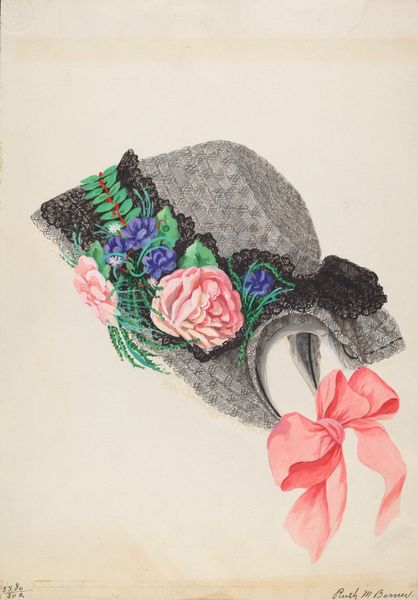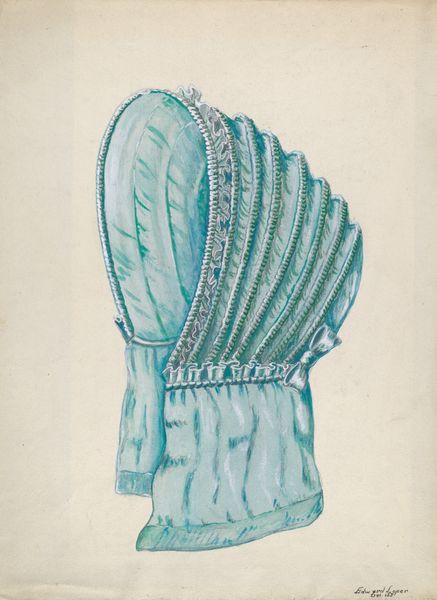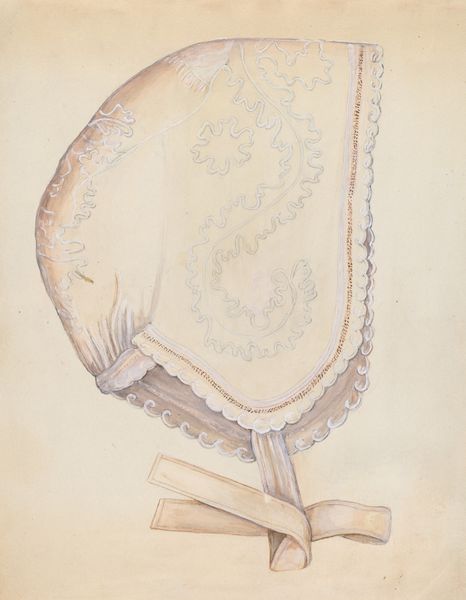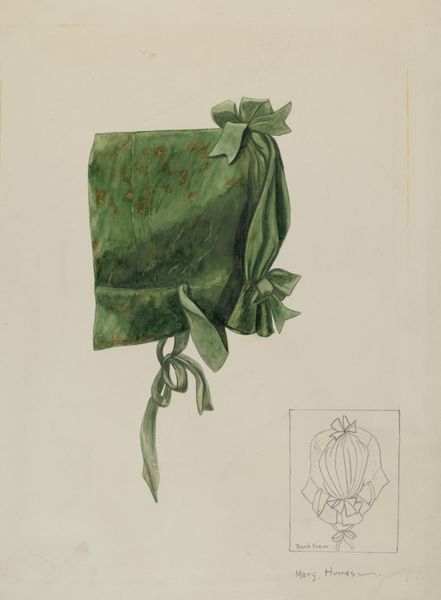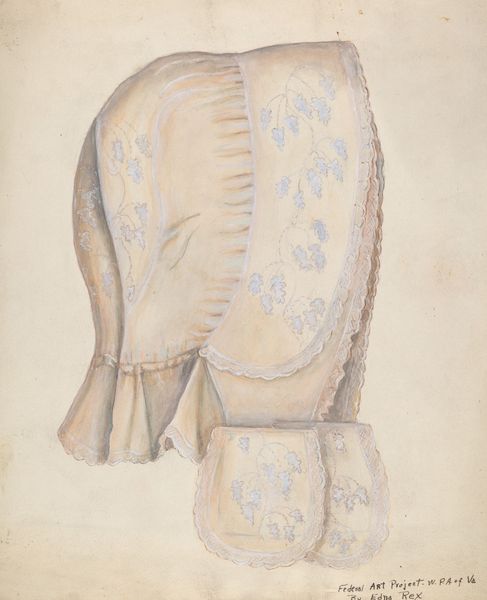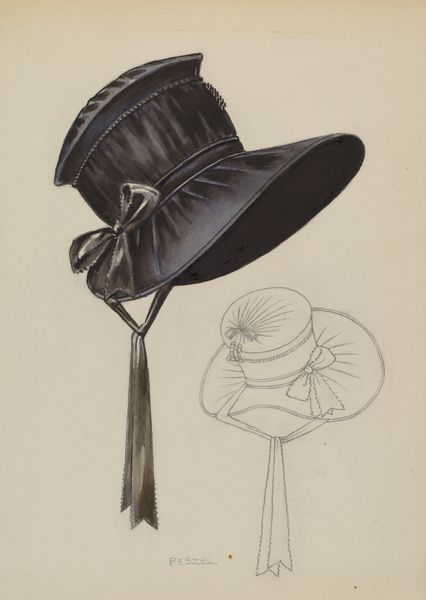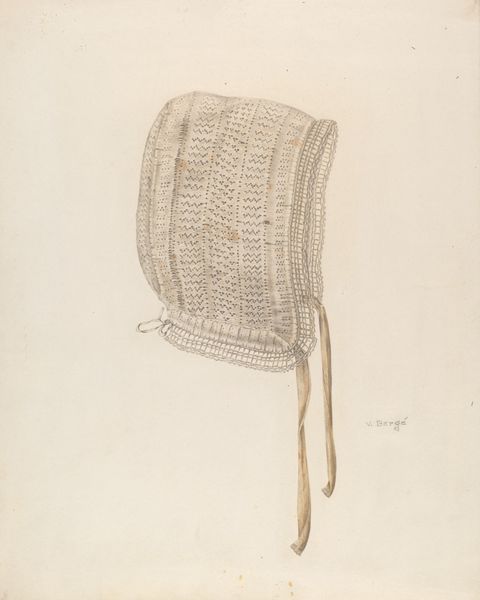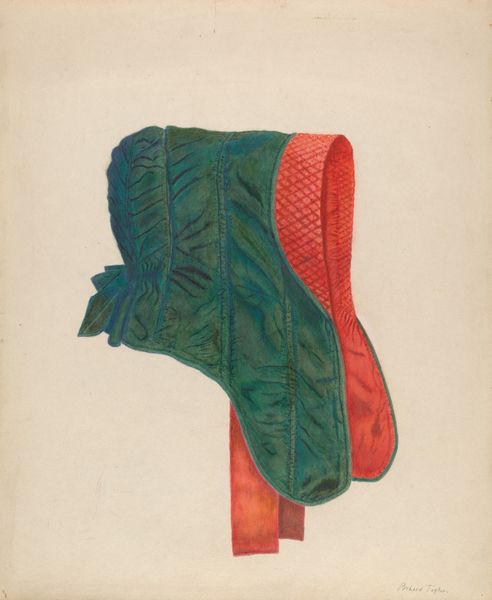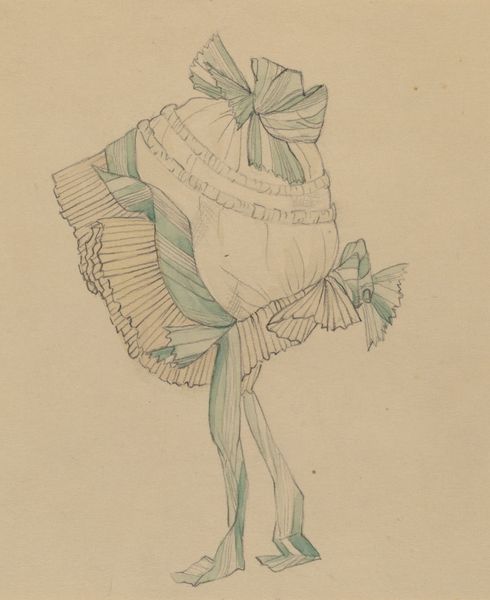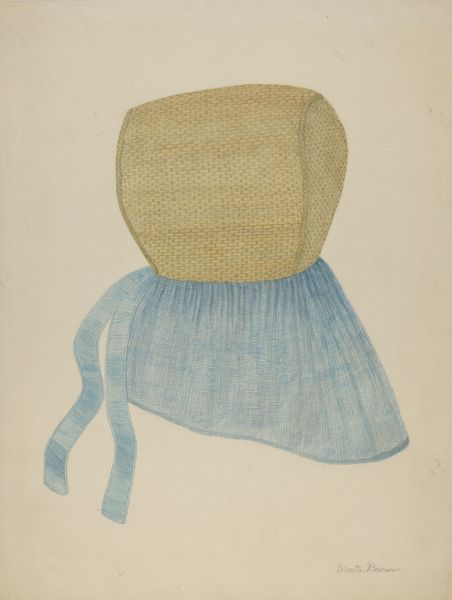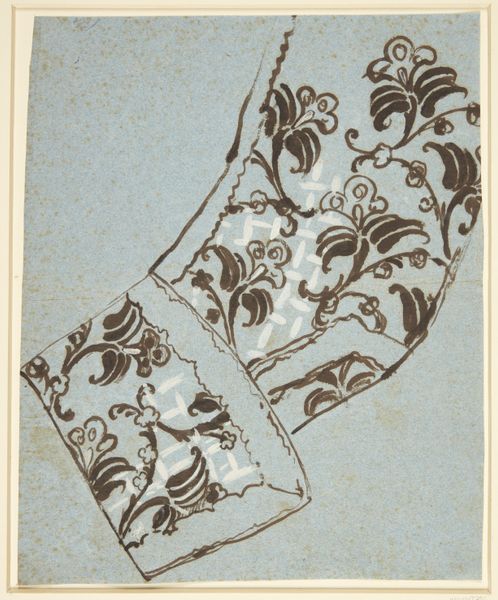
drawing, paper, watercolor
#
drawing
#
paper
#
watercolor
#
watercolour illustration
#
decorative-art
#
watercolor
Dimensions: overall: 38.3 x 36.3 cm (15 1/16 x 14 5/16 in.)
Copyright: National Gallery of Art: CC0 1.0
Curator: Let’s discuss "Child's Bonnet," a watercolor and pencil drawing on paper by Melita Hofmann, created between 1935 and 1942. What strikes you initially about this piece? Editor: The sheer tranquility. It's the delicate wash of pale blue, almost ethereal. The meticulously rendered fabric creates this soft, calming sensation. It's quite small and precious too, a quality reinforced by its delicate color palette. Curator: Indeed, Hofmann's use of watercolor showcases an impressive level of control. Look at how she suggests form through subtle variations in tone, meticulously depicting the texture of the bonnet's fabric. The repeating lines, punctuated by the rosette forms, create a visually harmonious experience. It seems almost hyperrealist, for an illustrative watercolor. Editor: Do you think the decorative nature could be attributed to social pressures? Women illustrators in this era often had to work in such delicate or seemingly domestic subject matter. Or could she have made it out of maternal affection perhaps, if it was for a real child? Curator: A compelling proposition. Viewing it from a historical context, these limitations constrained some, but conversely could empower others. Think of decorative arts having historically less recognition than painting. The delicate floral and domestic themes also reflected and shaped feminine identity in that time. This work seems very conscious of that duality, and its placement of itself within those definitions, while elevating the genre’s artistry and emotional resonance. Editor: That reading gives the image much more strength and agency. Beyond its function, there's a definite skill, yes—in transforming the functional into something aesthetically poignant and memorable, beyond just decoration. This becomes a story about control, expression and societal confines through the careful crafting of the composition. Curator: Ultimately, "Child’s Bonnet" embodies this subtle tension between technique and context. It invites us to examine our assumptions about the decorative arts and the lives of female artists. Editor: Yes, an image that prompts us to look closer, beneath the pastel surface, to see layers of meaning woven within the delicate rendering of a bonnet.
Comments
No comments
Be the first to comment and join the conversation on the ultimate creative platform.
